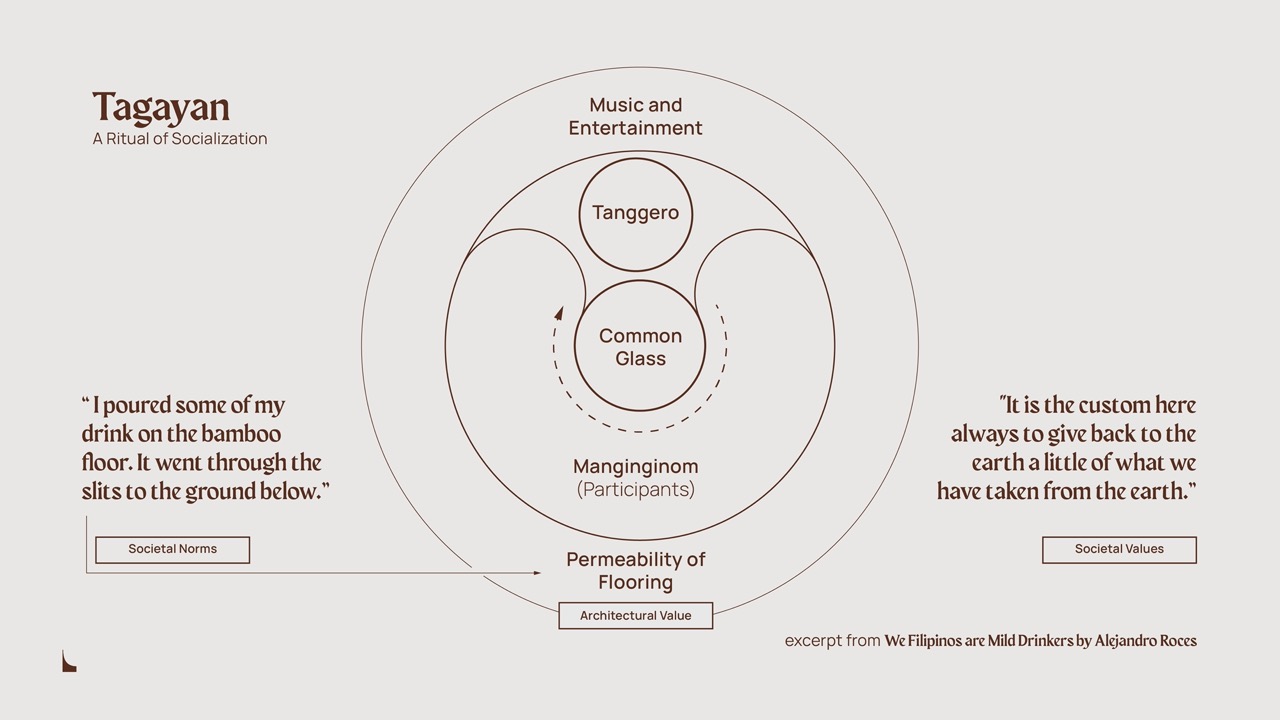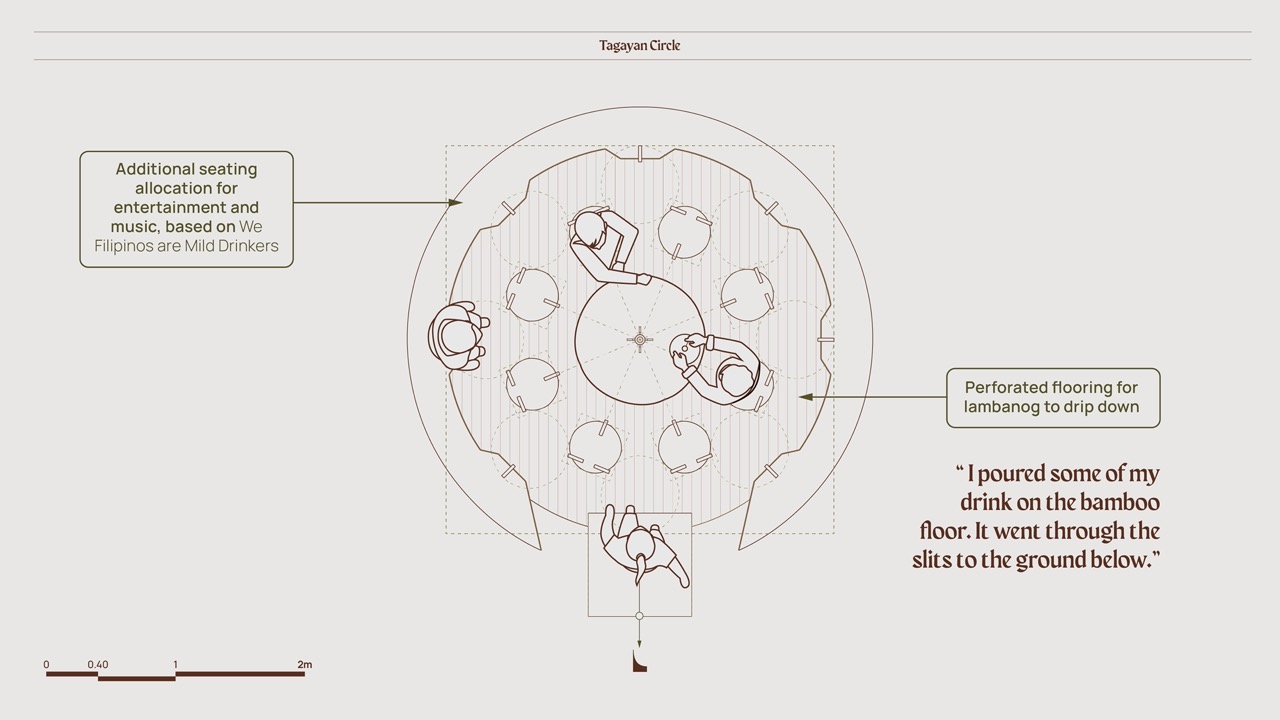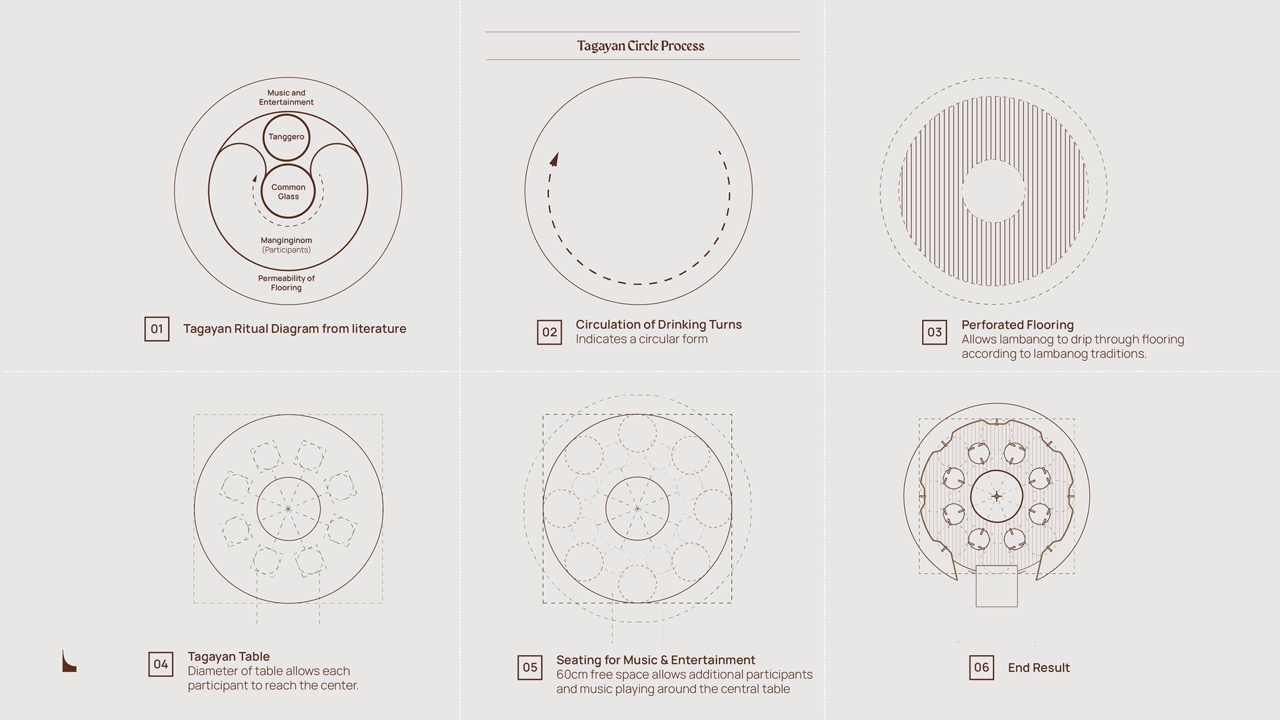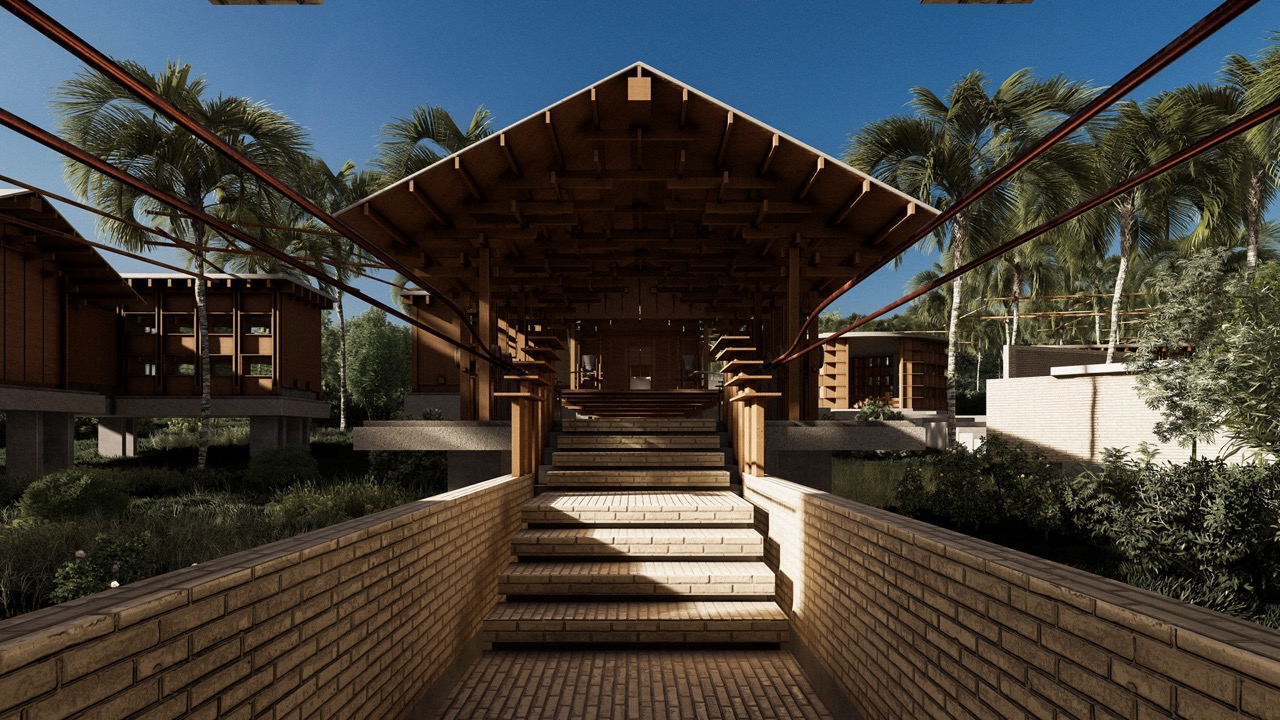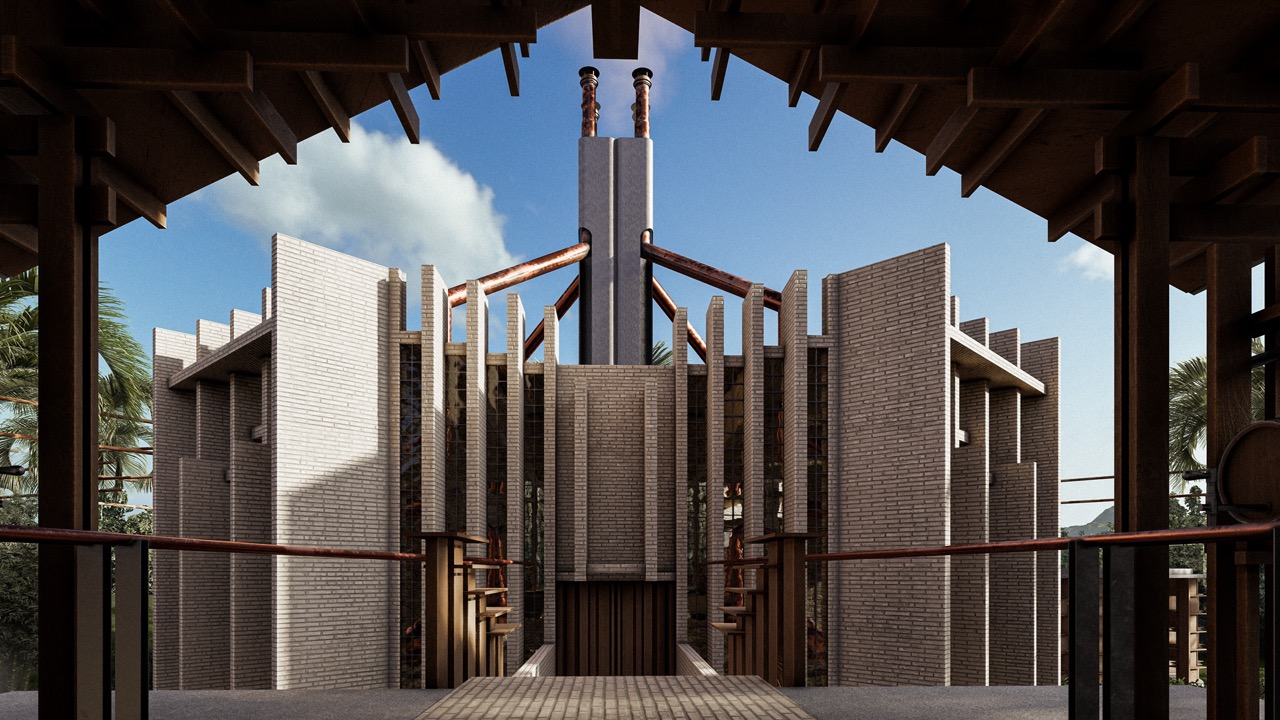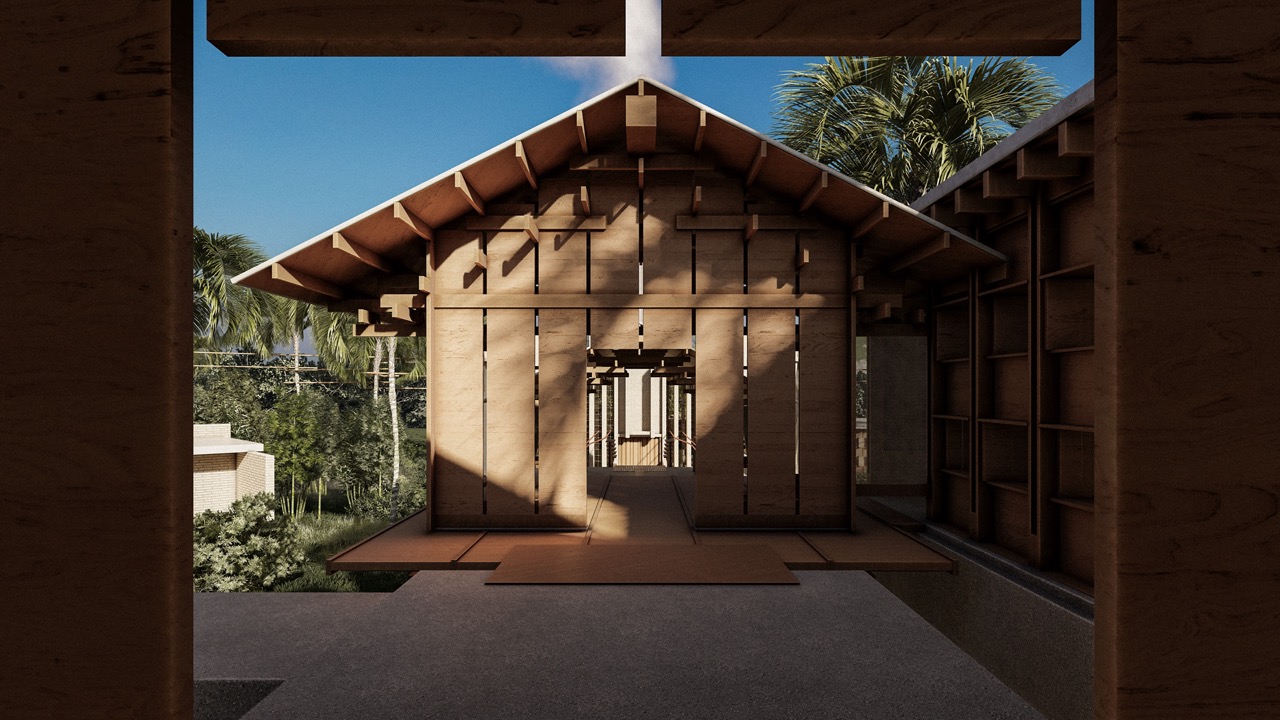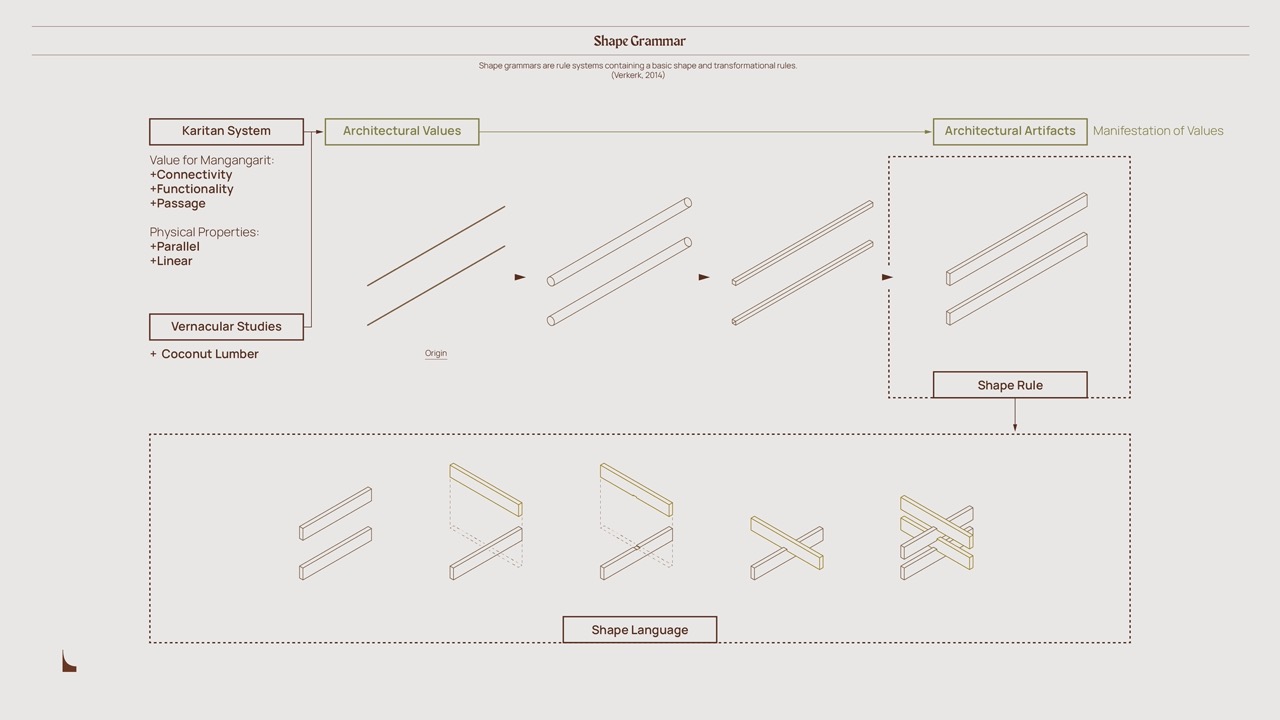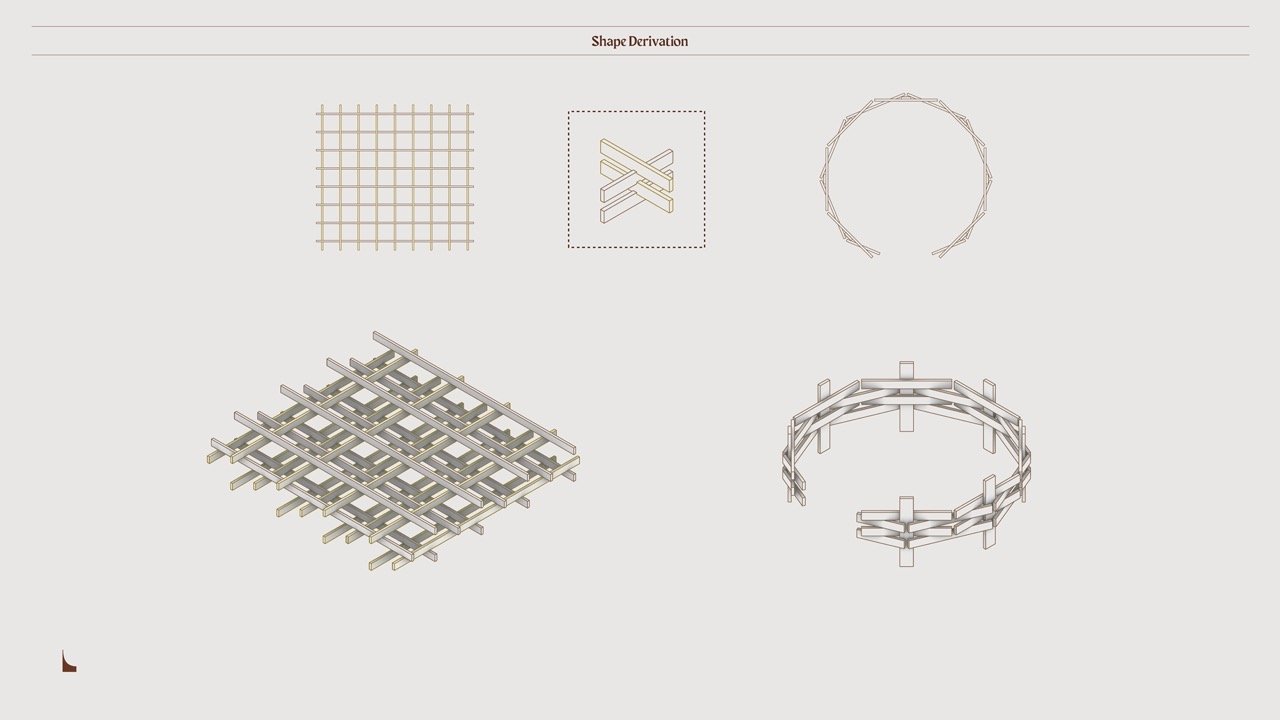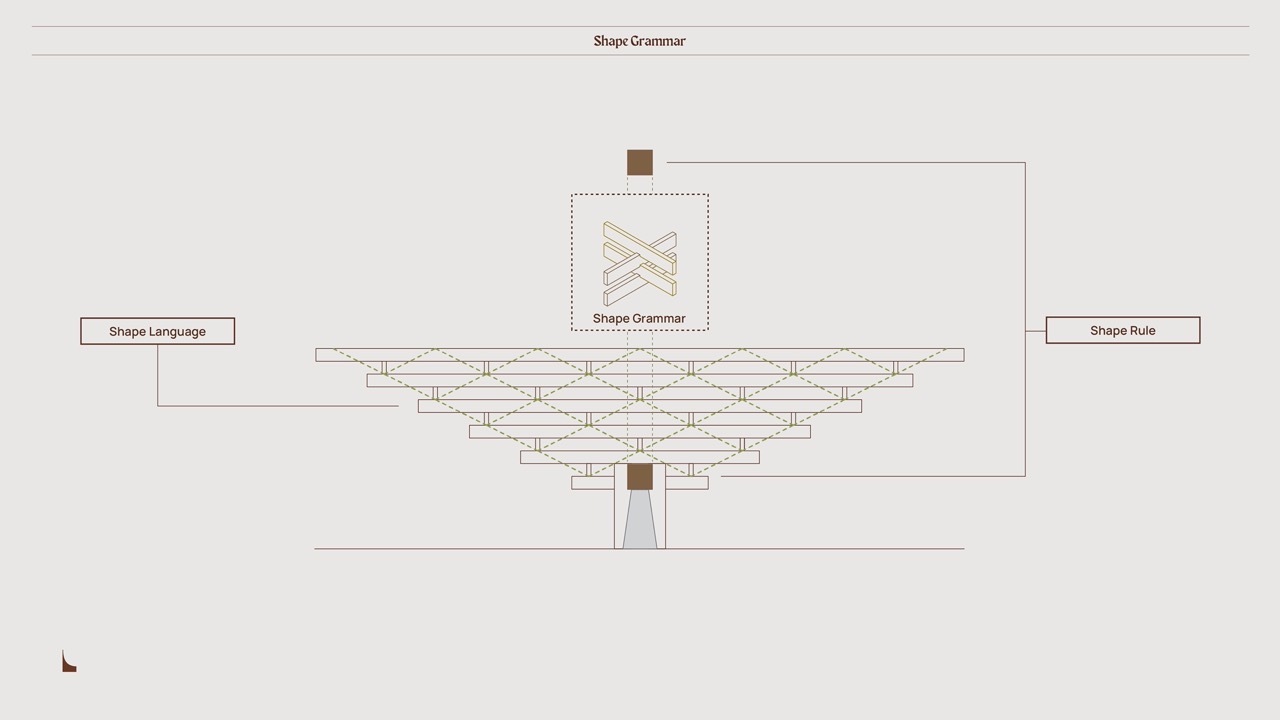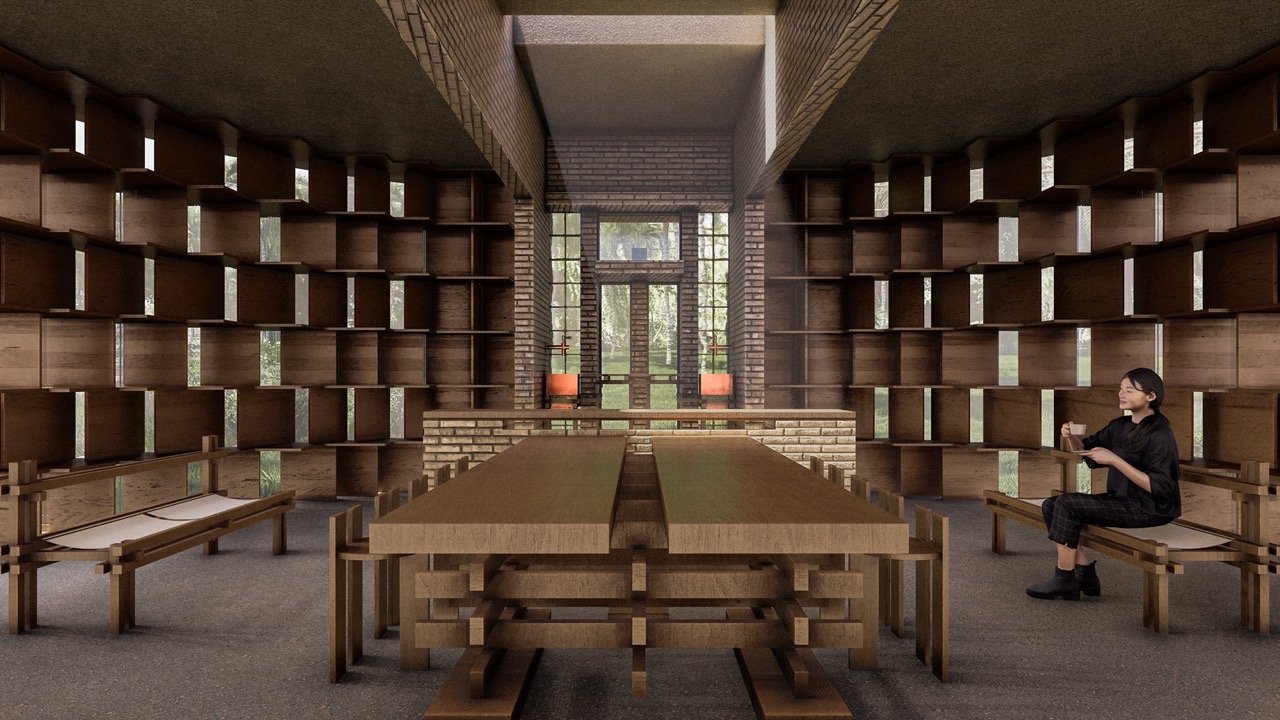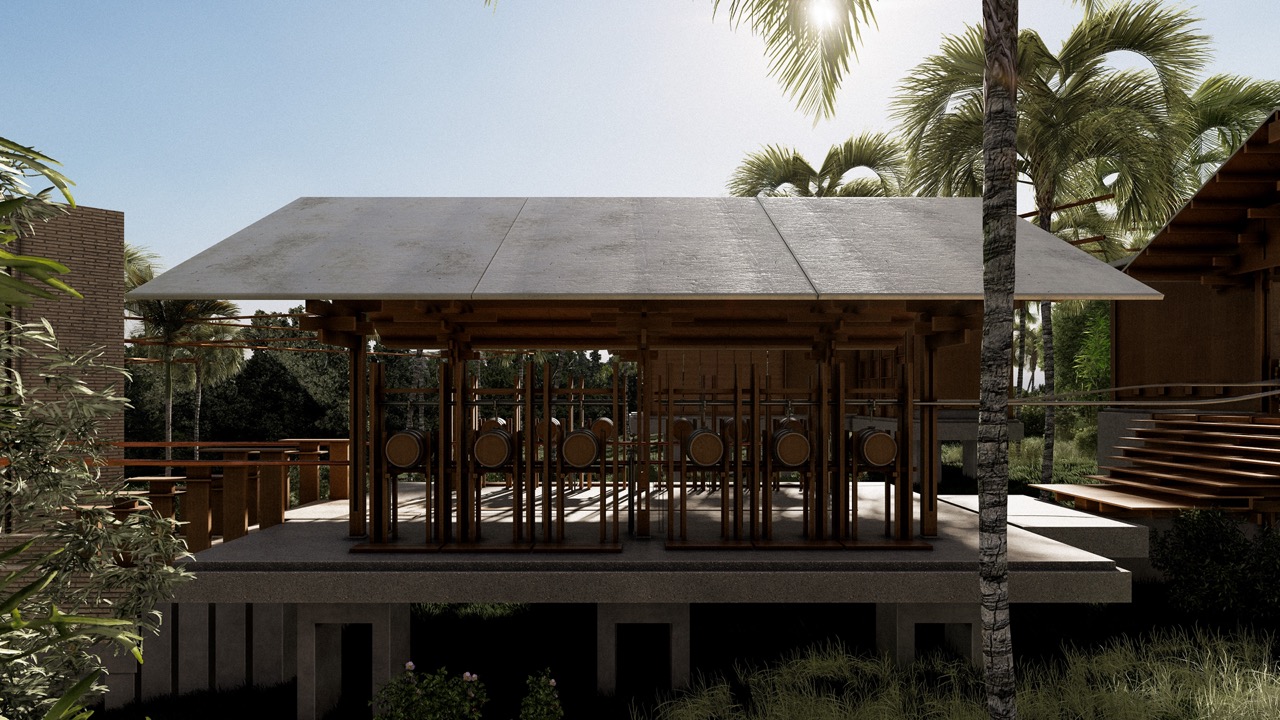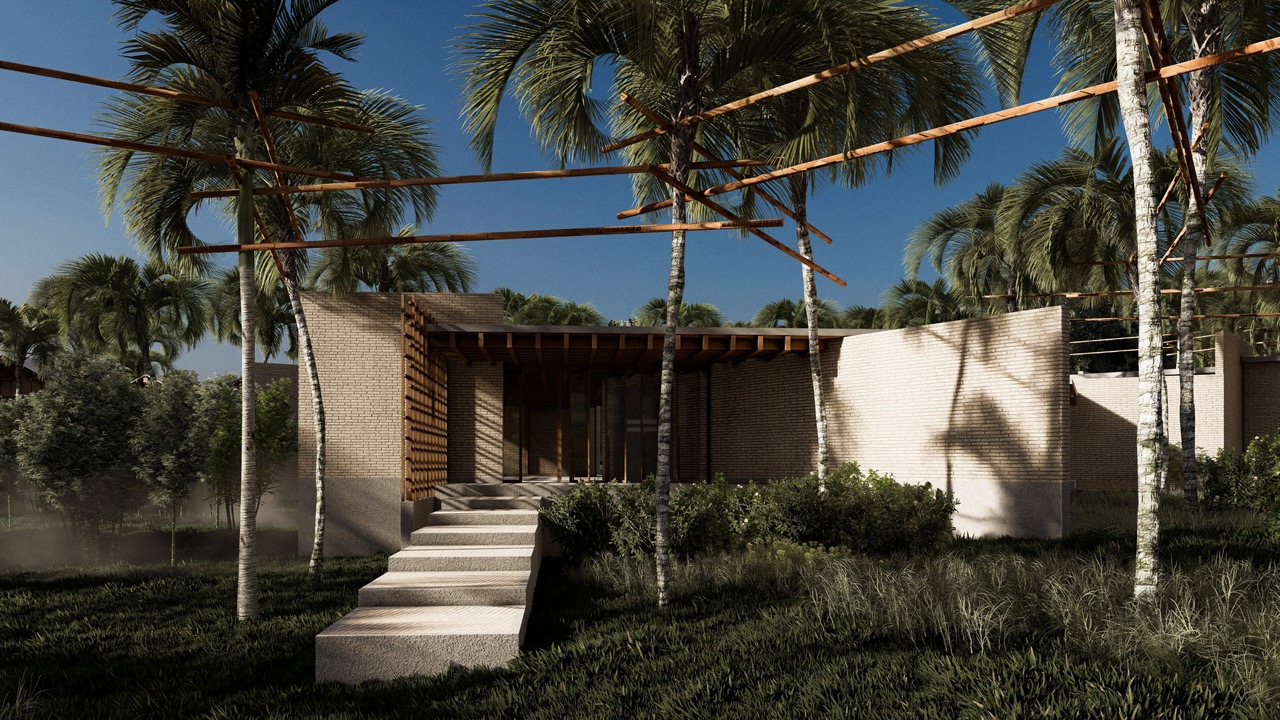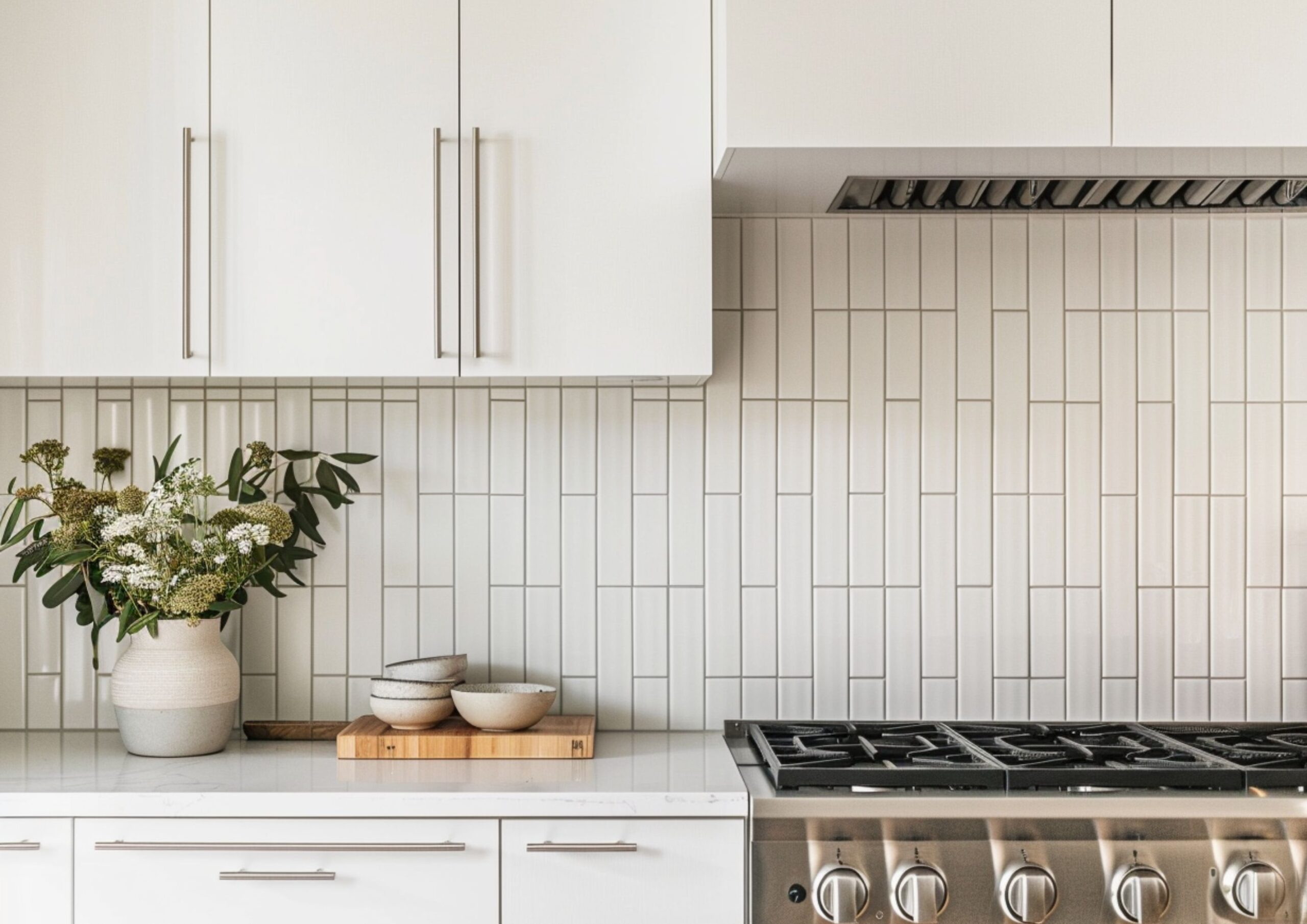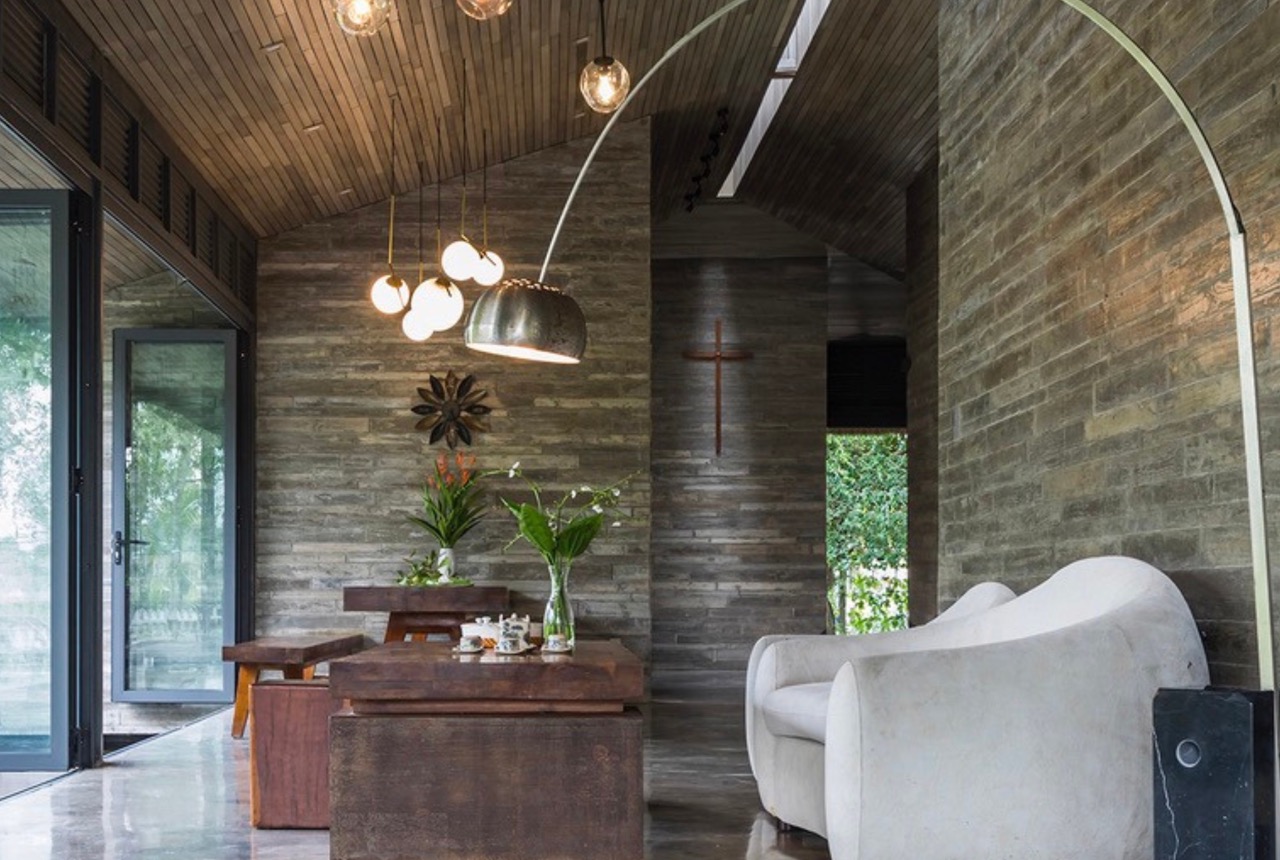Ever wonder how lighting can transform your home’s interior? It’s more than just positioning light fixtures (though that’s important too!). Unlike color psychology, the effects of lighting are surprisingly versatile and impactful. And the real reason is actually just hiding in plain sight—LED light bulbs. But it’s not like you have to go through the […]

Lambanugan: A Distillation of the Vernacular Architecture
Lambanog, known as coconut wine, is a staple in Filipino culinary culture. It’s a potent alcoholic beverage that reflects our unique heritage and rich produce. For his thesis under the CSB’s Design Exploration program, Lance Sy goes in-depth into the industry of creating this celebrated drink to come up with a design that strengthens the craft. Lambanugan is a mix of vernacular architecture enriched with cultural practices and rituals.
Strengthening Cultural Identity with Lambanugan
“ THESIS STATEMENT: Reintroducing traditional rituals and practices will enrich territorial identity and create a better culturally rooted architectural space for people producing and consuming the beverage, therefore making the local lambanog industry more competitive.”
Lambanugan revolves around the cultivation and renewal of the lambanog production typology. It explores the social traditions, rituals, and practices of drinking in the Philippines. This is especially true for lambanog as it relates to our nation’s agricultural heritage, with coconut being a major natural resource. The significance of the project lies in its circumventing the possibility of cultural loss. Unregulated and sub-standard production of lambanog has resulted in deaths due to improper distilling.
Undoubtedly, the production and consumption of these products have deep roots in our culture. Drinking in the Philippines is a social occasion with beliefs and customs. Practices such as “tagay” and “alay” add more meaning to our jovial and celebratory nature. As such, these traditions can be the muse that architecture can take inspiration from.
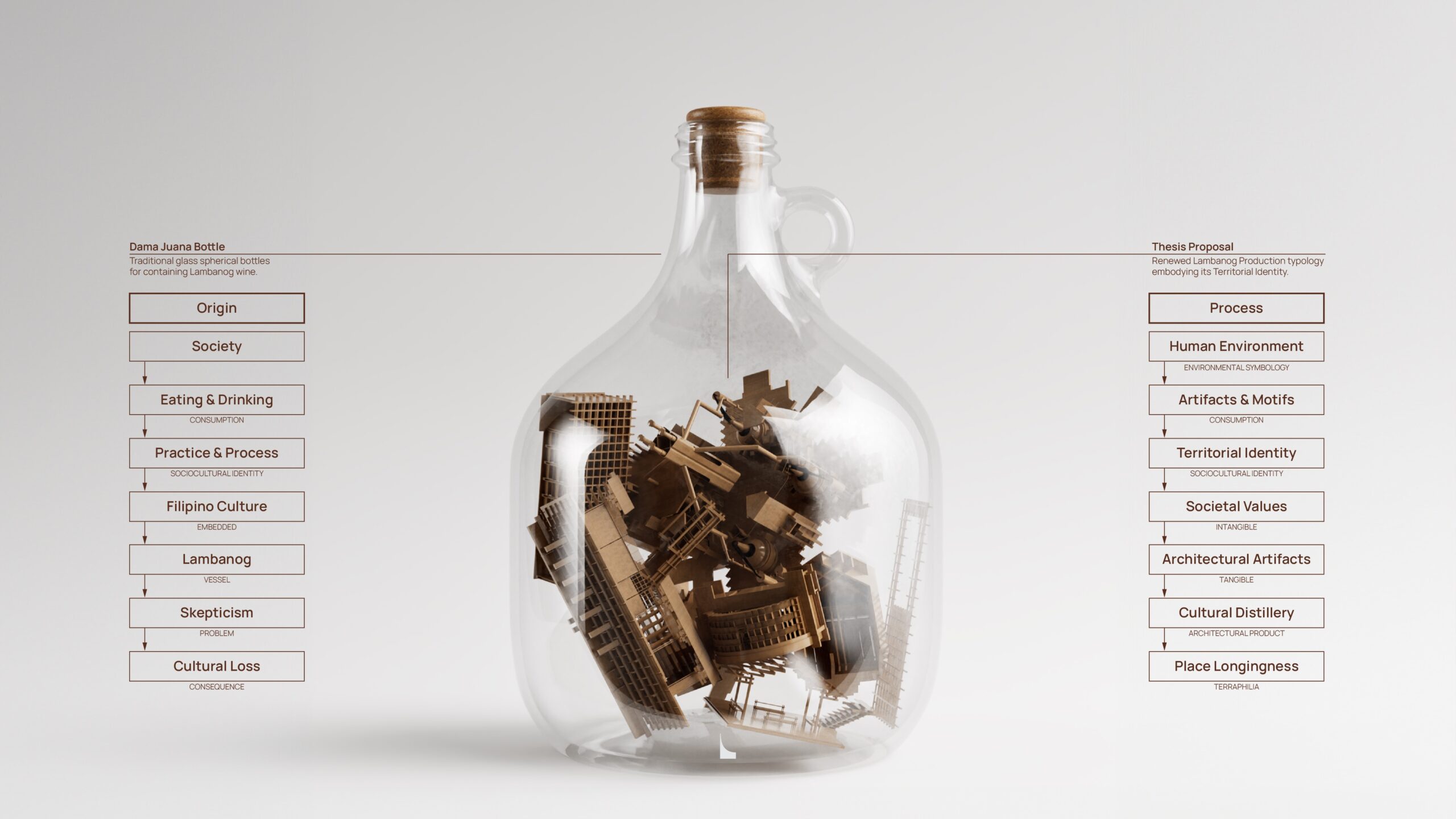
Building with Regional Identity
In line with the Design Exploration program, Lance Sy starts his design process with identifying the authentic elements that make up lambanog culture. The goal is to create a production typology that reaffirms its territorial identity. It uses the drink as a means to provoke topophilia and terraphilia, the love of one’s environment and locality. Three models make up the framework used to inform the design: the socio-physical model of interrelationships, the Identerra model, and the Vernacular Value model.
Traditionally, the Southern Tagalog region is well-known for its lambanog. The Tayabas area houses the Mallari Distillery that sits at the foot of Mt. Banahaw. Sy analyzed the site’s characteristics ranging from the dwelling places of the workers, landscape, lifestyle, and their rituals. It is here where the essence of uniqueness can be captured and distilled into a design.
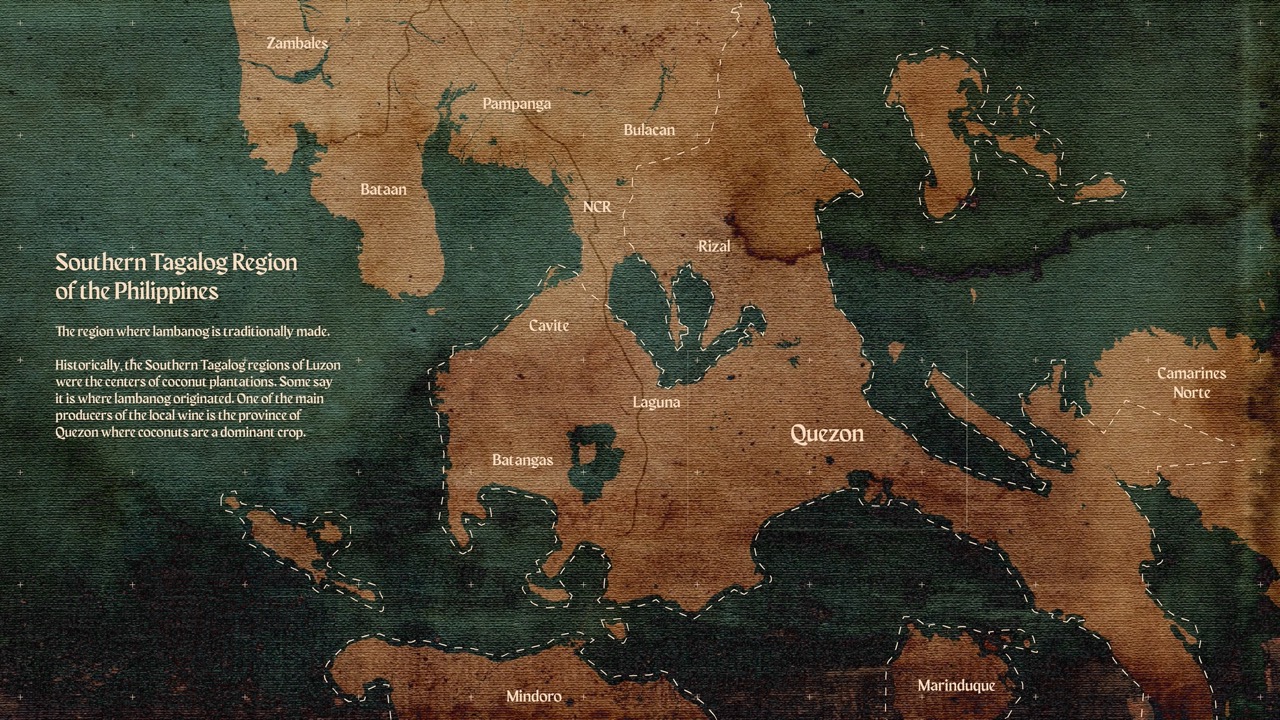
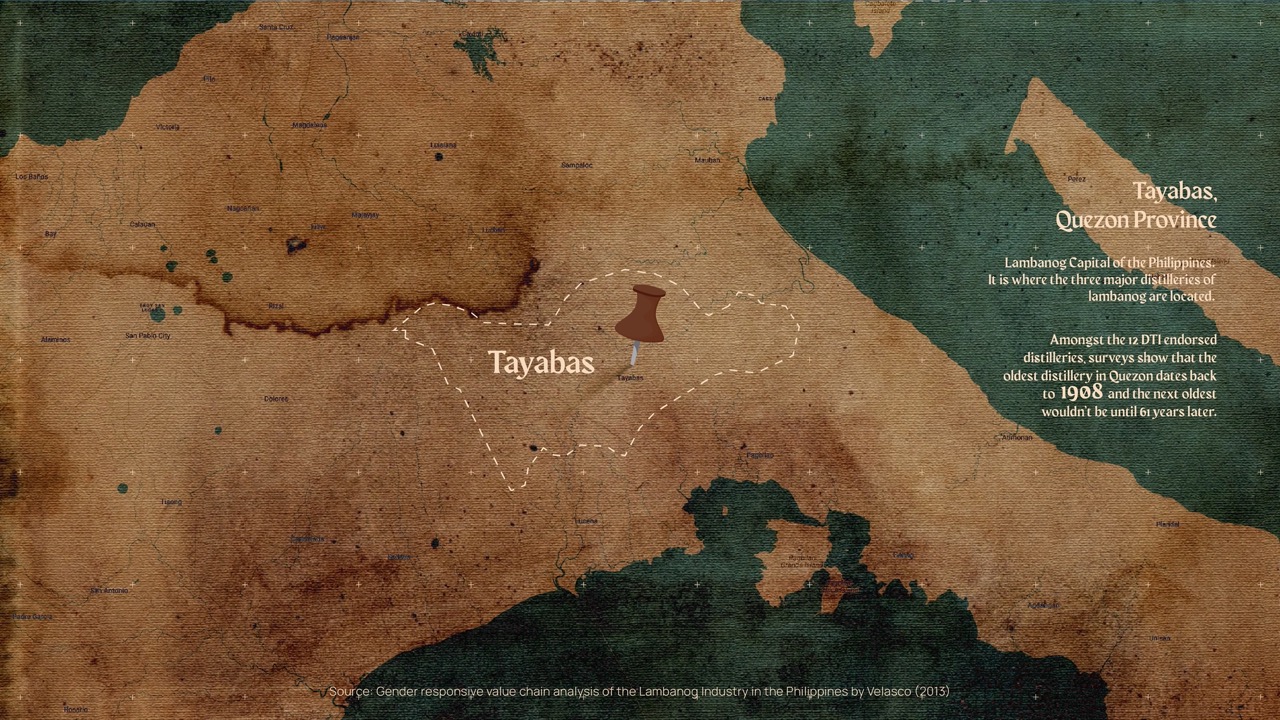
The Mangangarit, or coconut climbers, are the heroes of lambanog’s production. The site features a rich expanse of the tropical tree that the locals had built around. A bridge between each tree, called a Karitan, is built to allow for ease of traversal rather than climbing each tree for harvest. Fixed parallel bamboo poles connect them together and allow climbers to steadily walk across.

Empowering Lambanog Production
“I poured some of my drink on the bamboo floor. It went through the slits on the ground below.” – Alejandro R. Roces (We Filipinos Are Mild Drinkers).
Lance translates these findings into Lambanugan from these indigenous elements. The structure features motifs that reference the parallel form of the Karitan. Artifacts, filled with symbolisms and meanings, dot the project as they serve as muses for environmental symbology. It’s a design that leans heavily into the traditional experience of savoring lambanog.
These are the Pugon, the place where artisans create and work with lambanog. The tagayan is where the drink can be enjoyed with its traditional means of enjoyment. Lastly, the tahanan is the residential and hosting component to the design. The arrangement of these spaces form an experience to encounter the drink in a holistic manner. The design supports the process of making lambanog from fruit to bottle. An in-depth study into the workflow serves as the basis, and Sy designs these areas with a selection that merges cultural forms with functional requirements.

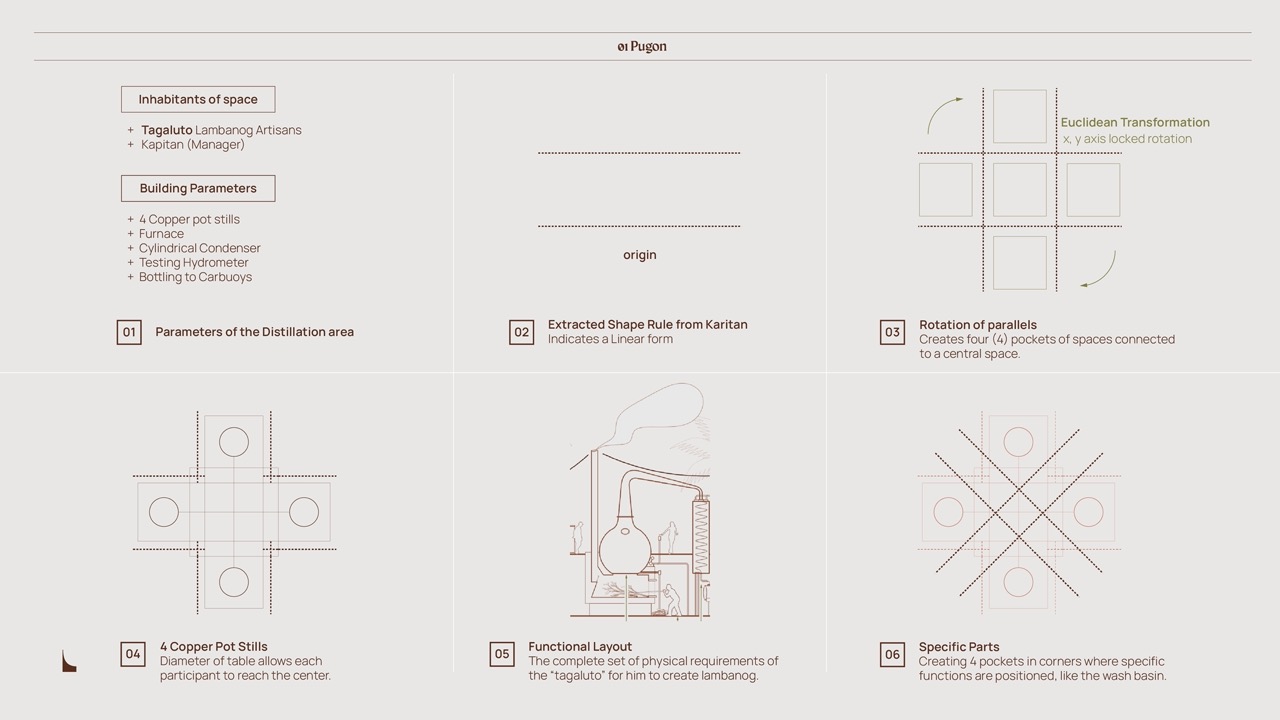
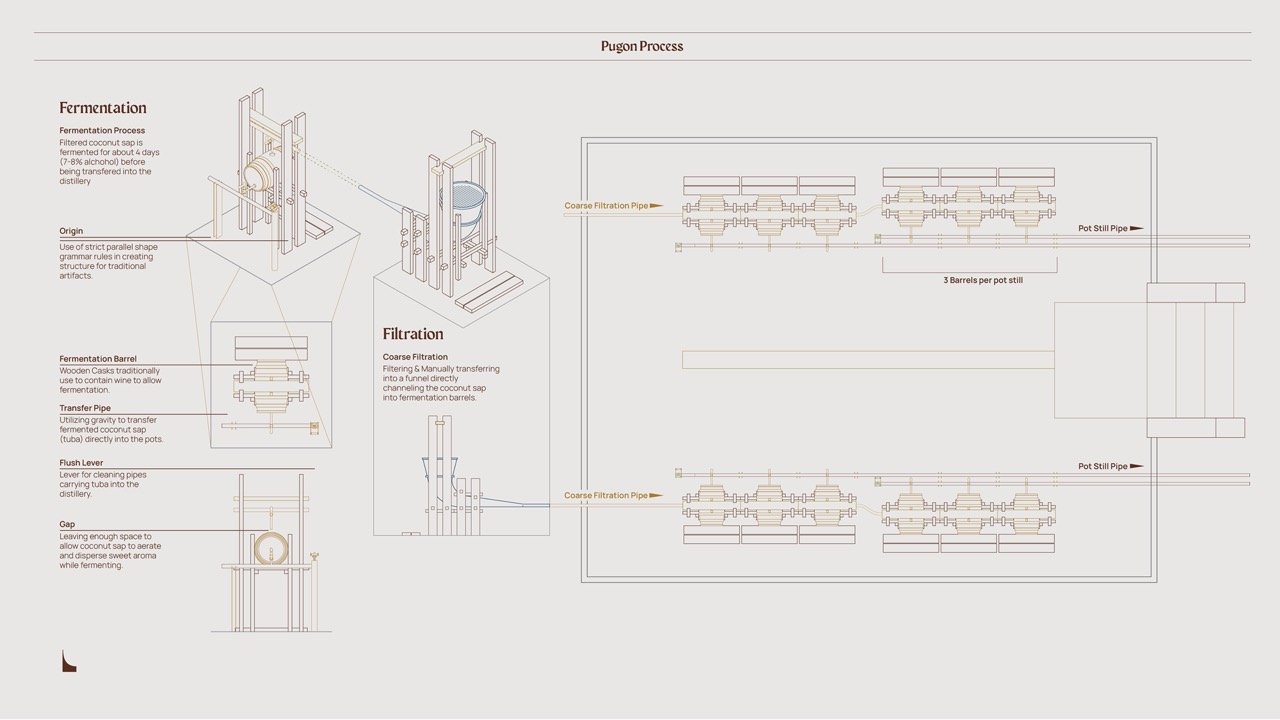
Strengthening Local Industries
Lambanugan explores how the development of rural industries can be harmonious with its vernacularity. It captures the essence of lambanog and distills it into a modern structure that remains legible to its local community. True to its name, CSB’s Design Exploration class dissects the ethos of the design goals and enables students to come up with their own unique take on architecture.
Read more: CSB’s Design Exploration: A Unique Approach to Architecture Education
Visuals and diagrams are by Lance Sy
